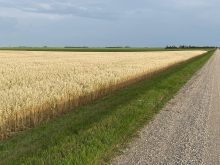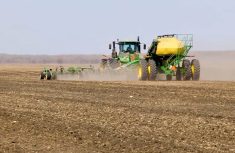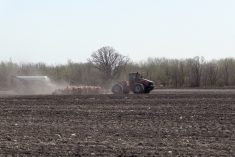Up to a quarter million tonnes of oats per year could find a new end use as a Winnipeg agrifood company sets up a new oat processing plant near its home base.
Privately-held Paterson GlobalFoods (PGF) announced Thursday it will start construction “immediately” on the new plant, on part of its 600-acre site next to its inland grain terminal in the RM of Rosser, northwest of Winnipeg’s airport.
The new oat mill will be known as O Foods Ltd., PGF said, and will produce “a full range of high-health oat products for the world market” using up to 250,000 tonnes of oats per year, sourced “from western Canadian farmers.”
Read Also

Senft to step down as CEO of Seeds Canada
Barry Senft, the founding CEO of the five-year-old Seeds Canada organization is stepping down as of January 2026.
PGF said its new mill will be built on “Manitoba’s largest private rail siding,” a 260-car spot with connections to Canadian Pacific, Canadian National and BNSF rail lines. “This exceptional rail service will offer the greatest access possible to the North American market,” the company said.
“Paterson’s new oat mill will allow PGF to continue to diversify its commodity business with value-added products for the benefit of consumers and farmers alike,” PGF CEO Andrew Paterson said in a release Thursday. The development’s price tag wasn’t disclosed in its release Thursday.
The company — whose announcement was attended by Manitoba Premier Brian Pallister among other dignitaries — said it will be eligible for the province’s tax increment financing (TIF) program, in which the increased taxes created by a “significant new development” are used directly to help fund that development.
Under the province’s new TIF framework announced last December, TIF-backed projects have to result in “substantial” improvements in the value of the property in order to receive funding, without which a given development wouldn’t have occurred.
A Paterson spokesperson said Thursday via email the oat plant project may also qualify for other infrastructure support under existing programs where it satisfies criteria.
PGF said it considered “a number of sites” across Western Canada and in the U.S. and shortlisted not only Manitoba but North Dakota, where in 2016 it opened a major grain handling site at Bottineau, about 150 km south of Brandon.
Manitoba and North Dakota were shortlisted “based on their proximity to the oat-growing region and logistical advantages to end-use markets,” PGF’s spokesperson said, and “local government support and enthusiasm for the project contributed to the decision to build in Manitoba.”
Oats can be sourced across long distances on the Prairies, but growers in Manitoba’s Red River Valley are “significant producers of high-quality oats,” another PGF spokesperson said separately Thursday.
While Manitoba is a significant oat-growing province, having produced 709,000 tonnes in total in 2018-19, Saskatchewan’s oat production last year was more than double at 1.69 million. Third among oat-growing provinces last year was Alberta at 700,100 tonnes. — Glacier FarmMedia Network
















